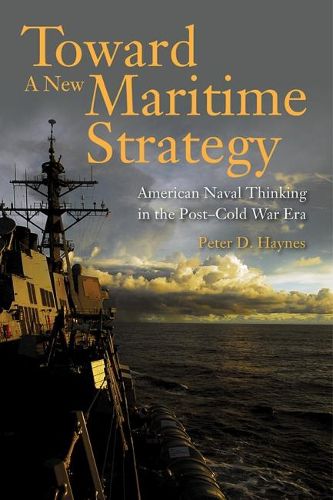Readings Newsletter
Become a Readings Member to make your shopping experience even easier.
Sign in or sign up for free!
You’re not far away from qualifying for FREE standard shipping within Australia
You’ve qualified for FREE standard shipping within Australia
The cart is loading…






The book examines the evolution of American naval thinking in the post-Cold War era. It recounts the development of the U.S. Navy’s key strategic documents from the fall of the Berlin Wall in 1989 to the release in 2007 of the U.S. Navy’s maritime strategy, A Cooperative Strategy for 21st Century Seapower. An insightful and penetrating intellectual history, it critically analyses the Navy’s way of thinking and ideas, and recounts how they interacted with those that govern U.S. strategy to shape the course of U.S. naval strategy in the post-Cold War era. The book explains how the Navy arrived at its current strategic outlook and why it took nearly two decades for the Navy to develop a maritime strategy in an era in which the relative saliency of such should have been more apparent to Navy leaders. The author, a Navy captain, doesn’t shy from taking to task the institution and its leaders for their narrow worldview and failure to understand the virtues and contributions of American sea power, particularly in an era of globalisation. It describes the reasons behind the Navy’s late development of a maritime strategy during the post-Cold War era. It recounts the origins and evolution of the Navy’s distinctive way of thinking and ideas about sea power since before the Second World War, particularly how they shaped and were shaped by the Navy’s Cold War experiences. It argues that the Navy’s way of thinking and ideas, and how they interacted those that governed U.S. strategy, bounded and channelled U.S. naval strategy away from a maritime approach as they had during the Cold War. It took an implausible series of events for one to emerge, including a losing war in Iraq-that called into question long-standing assumptions about U.S. strategy, threatened the Navy’s relevance, and brought about a systemically oriented U.S. strategic approach-and the appearance of two maritime-minded Navy leaders. It focuses on the process by which the Navy developed its strategic documents, the process where institutional ideas are assembled, negotiated, and reshaped in light of other influences-i.e., the direction of U.S. strategy, budgetary constraints, perceived threats, and the competing interests of other domestic and institutional actors-because even though the subject is American naval thinking (and here it must be emphasized that the concept itself is somewhat metaphorical as only people can think), that is how real strategy is made.
$9.00 standard shipping within Australia
FREE standard shipping within Australia for orders over $100.00
Express & International shipping calculated at checkout
The book examines the evolution of American naval thinking in the post-Cold War era. It recounts the development of the U.S. Navy’s key strategic documents from the fall of the Berlin Wall in 1989 to the release in 2007 of the U.S. Navy’s maritime strategy, A Cooperative Strategy for 21st Century Seapower. An insightful and penetrating intellectual history, it critically analyses the Navy’s way of thinking and ideas, and recounts how they interacted with those that govern U.S. strategy to shape the course of U.S. naval strategy in the post-Cold War era. The book explains how the Navy arrived at its current strategic outlook and why it took nearly two decades for the Navy to develop a maritime strategy in an era in which the relative saliency of such should have been more apparent to Navy leaders. The author, a Navy captain, doesn’t shy from taking to task the institution and its leaders for their narrow worldview and failure to understand the virtues and contributions of American sea power, particularly in an era of globalisation. It describes the reasons behind the Navy’s late development of a maritime strategy during the post-Cold War era. It recounts the origins and evolution of the Navy’s distinctive way of thinking and ideas about sea power since before the Second World War, particularly how they shaped and were shaped by the Navy’s Cold War experiences. It argues that the Navy’s way of thinking and ideas, and how they interacted those that governed U.S. strategy, bounded and channelled U.S. naval strategy away from a maritime approach as they had during the Cold War. It took an implausible series of events for one to emerge, including a losing war in Iraq-that called into question long-standing assumptions about U.S. strategy, threatened the Navy’s relevance, and brought about a systemically oriented U.S. strategic approach-and the appearance of two maritime-minded Navy leaders. It focuses on the process by which the Navy developed its strategic documents, the process where institutional ideas are assembled, negotiated, and reshaped in light of other influences-i.e., the direction of U.S. strategy, budgetary constraints, perceived threats, and the competing interests of other domestic and institutional actors-because even though the subject is American naval thinking (and here it must be emphasized that the concept itself is somewhat metaphorical as only people can think), that is how real strategy is made.